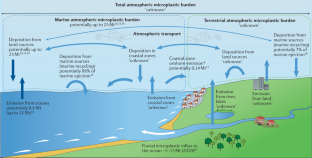2022-05-10 アメリカ国立標準技術研究所(NIST)
無線システムは、混雑したセルラー周波数や3GHz前後の初期の5Gシステムよりも上の、10~100ギガヘルツ(GHz)のミリ波スペクトラムに移行しつつあります。システム運用者は、新しいmmWaveスペクトルの低い帯域を好む傾向があります。その理由の1つは、波長が小さいために有効なアンテナ面積が小さくなり、高い周波数ではより多くの信号が失われるという公式の影響を受けていることです。しかし、これまで、多くの機関によるこの効果の測定は、これが真実かどうかをめぐって意見が分かれていました。
NISTの研究者は、26.5~40GHz帯を対象例として、周波数効果を測定する新しい方法を開発しました。実験室と2つの実環境で広範な研究を行った結果、NISTの結果は、主要な信号経路(送信機と受信機の間の明確な「見通し線」上)は周波数によって変化しないことを確認しました。これは、従来の無線システムでは一般的に受け入れられているテーゼですが、mmWaveスペクトラムでは今まで証明されていませんでした。
<関連情報>
- https://www.nist.gov/news-events/news/2022/05/nist-finds-wireless-performance-consistent-across-5g-millimeter-wave-bands
- https://ieeexplore.ieee.org/document/9759479
ミリ波帯におけるマルチパスチャネルの周波数依存性を測定する方法論 Methodology for Measuring the Frequency Dependence of Multipath Channels Across the Millimeter-Wave Spectrum
Damla Guven,Benjamin F. Jamroz,Jack Chuang,Camillo Gentile,Robert D. Horansky,Kate A. Remley,Dylan F. Williams,Jeanne T. Quimby,Alec J. Weiss,Rodney Leonhardt
IEEE Open Journal of Antennas and Propagation Published:19 April 2022
DOI:10.1109 / OJAP.2022.3168401

Abstract
Millimeter-wave (mmWave) communications promise Gigabit/s data rates thanks to the availability of large swaths of bandwidth between 10–100 GHz. Although cellular operators prefer the lower portions of the spectrum due to popular belief that propagation there is more favorable, the measurement campaigns to confirm this – conducted by ten organizations thus far – report conflicting results. Yet it is not clear whether the conflict can be attributed to the channel itself – measured in different environments and at different center frequencies – or to the differences in the organizations’ channel sounders and sounding techniques. In this paper, we propose a methodology to measure mmWave frequency dependence, using the 26.5–40 GHz band as an example. The methodology emphasizes calibration of the equipment so that the measurement results represent the channel alone (and not the channel coupled with the channel sounder). Our results confirm that free-space propagation is indeed frequency invariant – a well understood phenomena but to our knowledge reported nowhere else at mmWave to date. More interestingly, we found that specular paths – the strongest after the line-of-sight path and so pivotal to maintaining connectivity during blockage – are the least invariant compared to weaker diffracted and diffuse paths.



